Are “natural” foods the same as “organic” foods? Is one better than the other for me and my family?
Let’s take each term, one at a time.
Natural is a word manufacturers love to wallpaper on the front of their packaged foods because the bottom line is… natural sells food products! Savvy advertising predisposes consumers to believe that what they are buying is healthy when the word natural is on the front of the package. It helps engender that feel-good response about the choice we are making. Additionally, pictures of nature, golden wheat, the sun, and bucolic farms may appear on packages sporting the natural label, furthering our “healthy choice-feel.”
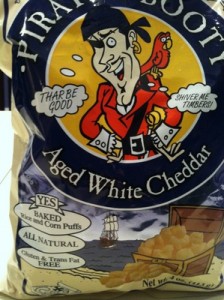 While natural infers that something is real, untainted by processing, and pure because it is a product of the earth, the lack of enforceable standards in the US means that the term natural, assures nothing. This is because the FDA has not defined natural, and therefore it cannot regulate the term. According to the FDA, there are no objections to using natural as long as the food therein does not contain added color, artificial flavors or synthetic substances.
While natural infers that something is real, untainted by processing, and pure because it is a product of the earth, the lack of enforceable standards in the US means that the term natural, assures nothing. This is because the FDA has not defined natural, and therefore it cannot regulate the term. According to the FDA, there are no objections to using natural as long as the food therein does not contain added color, artificial flavors or synthetic substances.
Take for example Pirate’s Booty, a seemingly healthier snack whose front package boasts: “BAKED rice and corn puff,” “ALL NATURAL,” and “Gluten & Trans Fat FREE.” Perhaps it’s better than other snack choices, but the ALL NATURAL advertising has no defined meaning, it advances nothing factual about the ingredients inside the bag or the process of how they were grown. It’s only a feel-good statement sandwiched in-between the other advertisements.
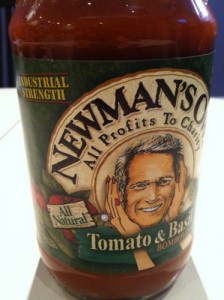 Unfortunately, looking on a package for truthful information has become ever more entangled since the FDA also doesn’t require labeling of GMO ingredients. So for instance, in the case of Paul Newman’s Tomato & Basil Bombolina pasta sauce – which has an “All Natural” label on the front, and whose ingredients seem natural – the question is, are the soybean oil and sugar “natural” if they are GMO ingredients?
Unfortunately, looking on a package for truthful information has become ever more entangled since the FDA also doesn’t require labeling of GMO ingredients. So for instance, in the case of Paul Newman’s Tomato & Basil Bombolina pasta sauce – which has an “All Natural” label on the front, and whose ingredients seem natural – the question is, are the soybean oil and sugar “natural” if they are GMO ingredients?
As consumers, we must regrettably assume that the sauce’s soybean oil is derived from GMO soy, since there is no organic certification or NON–GMO Project Certified labeling on the jar. Additionally, “sugar” is not a clear enough description anymore.
Unless the ingredient says “cane sugar,” the default is to assume it is sugar derived from sugar beets, a major herbicide tolerant GMO food crop. (Newman’s customer relations previously informed me that the “sugar” in all their cereals is cane sugar. I haven’t yet heard back from them about the sugar or soybean oil in their tomato sauce.)
So no, natural is just not good enough to mean anything trustworthy, consistent, or regulated.
Organic is an entirely other matter. While it is similarly not sufficient for the manufacturer to simply claim their product is organic on their packaging, there are several legitimate certifications you can find displayed on products to ensure their ingredients have been organically grown. They are shown below. A product may have more than one organic certification label on it.
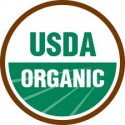
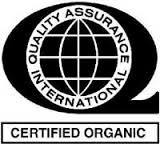
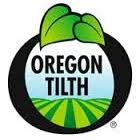
USDA Organic certification is the most common one, visible on the front of a package. It is also considered the baseline of acceptable standards by Organic Consumers Association and reads as follows:
Organic Standards
The organic standards describe the specific requirements that must be verified by a USDA-accredited certifying agent before products can be labeled USDA organic. Overall, organic operations must demonstrate that they are protecting natural resources, conserving biodiversity, and using only approved substances.
Organic crops. The USDA organic seal verifies that irradiation, sewage sludge, synthetic fertilizers, prohibited pesticides, and genetically modified organisms were not used.
Organic livestock. The USDA organic seal verifies that producers met animal health and welfare standards, did not use antibiotics or growth hormones, used 100% organic feed, and provided animals with access to the outdoors.
Organic multi-ingredient foods. The USDA organic seal verifies that the product has 95% or more certified organic content. If the label claims that it was made with specified organic ingredients, you can be sure that those specific ingredients are certified organic.
(Source: US Department of Agriculture )
Quality Assurance International (QAI) is a 3rd party independent organization founded in San Diego, CA in 1989.Their label appears on the back of a package. QAI is an excellent certification and is a member of the NSF (National Sanitation Foundation) International family of companies.
Oregon Tilth Certified Organically Grown is a label I have only recently become aware of, but Oregon Tilth has had consumer’s backs since the 1980’s. Their work has been integral to the West Coast input for the USDA National Organic Program.
In short, there is no comparison between products that are certified organically grown and those that say Natural. One is a real statement of fact, defining a certified process of growing food and the ingredients within a product. The other is just an advertising word. When it comes to advertising, it’s only natural that it means nothing reliable.
Clearly certified organic is healthier than natural for you and your family.
About Ina Denburg
 Ina is a Lifestyle Coach and Wellness Educator who has lived and worked on the path of health and wellness for 30 years. She is passionate about wellness, her practice continuumLiving, is devoted to helping others discover, define and live it for themselves – at home, at work, and in school.
Ina is a Lifestyle Coach and Wellness Educator who has lived and worked on the path of health and wellness for 30 years. She is passionate about wellness, her practice continuumLiving, is devoted to helping others discover, define and live it for themselves – at home, at work, and in school.
GMO-Free Kitchen – a service Ina provides for individuals or groups. All consumer aspects from understanding to eliminating GMO foods, from cleaning them out of your pantry to shopping and replacing with upgraded food items, to learning how to cook delicious GMO-free meals.
Read more about Ina’s background and experience here.
